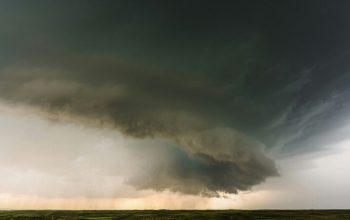The following is a joint statement by Wright County Public Health, Iowa Specialty Hospitals and Clinics, and the three Wright County public schools: Belmond-Klemme, Clarion-Goldfield-Dows, and Eagle Grove.
Personal Health
At the Eagle Grove Community School District, the health and safety of our students and staff are paramount. Therefore, Eagle Grove is taking a variety of actions to preserve the health of students, faculty, staff, and visitors. These efforts will be done in collaboration with Iowa Specialty Hospitals and Clinics, Wright County Public Health, neighboring county school districts, and state public health partners.
Testing
Students, faculty, and staff can get tested for COVID-19 at Iowa Specialty Hospital (ISH) or UnityPoint Clinic in Eagle Grove, if they are experiencing symptoms as indicated by the federal Centers for Disease Control and Prevention (CDC) or have been in contact with someone who has a lab-confirmed case of COVID-19.
Concerned families should contact the school nurse or their provider to discuss symptoms and determine if they qualify.
For those who do not meet the testing guidelines for school or ISH testing, other testing options are available through Test Iowa. The school is working with its partners on a strategy and procedure for broader testing of students this fall and more information will be shared when it is available.
Contact Tracing
Eagle Grove Community Schools, working with Wright County Public Health and other community experts, will put in place contact tracing to help identify and resolve possible exposure. Contact tracing, as described by the CDC, involves the identification, monitoring, and support of people who have been exposed to an individual infected with COVID-19. Contact tracing helps reduce the spread of disease by separating people who have been exposed to the disease from people who have not.
Managing Students Who Test Positive
Eagle Grove Community Schools will also manage positive cases within the schools, including working with local health partners to access quarantine spaces, monitoring students’ health, and facilitating access to healthcare services in and out of school.
Face Coverings
Staff: The school district requires the wearing of a face shield or mask by all staff when appropriate and safe as determined by the school district.
Students: The school district requires the wearing of a face shield or mask by all students when appropriate and safe as determined by the school district.
Visitors: Visitors will not be allowed in the school buildings during the school day unless it is deemed necessary by the building administration. All visitors entering the building during the school day will be required to wear a face covering.
Top quality face shields or coverings have been ordered for every staff member. All staff members will be required to wear face protection when they are outside of their classroom or around other staff or students. Students will be required to wear face coverings in order to board school transportation.
We ask everyone to please show you care by wearing face coverings on buses and in stores, restaurants, and anywhere people gather. Face coverings should cover your mouth and nose.
Communication Plan
Our communication plan is designed to reach each out to our stakeholder groups. The plan will be accessible to the community via our webpage and will list all resources, timelines, and communication needed for stakeholders.
Social Distancing within Classrooms
Elementary: PK-4
The school district will provide a lanyard, a face shield, and a mask to all students. Students will be able to clip their mask to their lanyard when it is not in use. Lanyards are designed to break away from the neck if tugged on for safety.
Social Distancing will be encouraged to the greatest extent possible.
Students will remain with their grade and section as much as possible and seating charts will be used and consistent throughout the day.
Middle School: 5-8
The school district will provide a lanyard, a face shield, and a mask to all students. Students will be able to clip their mask to their lanyard when it is not in use. The lanyards are designed to break away from the neck if tugged on for safety.
Social Distancing will be encouraged to the greatest extent possible.
Students will remain with their grade and section as much as possible and seating charts will be used in classrooms and at lunch.
High School
The school district will provide a lanyard, a face shield, and a mask to all students. Students will be able to clip their mask to their lanyard when it is not in use. Lanyards are designed to break away from the neck if tugged on for safety.
Social Distancing will be encouraged to the greatest extent possible.
Seating charts will be used in each classroom to assist in Contact Tracing.
Special Education
Attempts to meet physical distancing guidelines should meet the needs of the individual child and may require creative solutions, often on a case by case basis.
District Staff
Staff within the school should attempt to maintain a distance of 6 feet from each other as much as possible. Meetings and curriculum planning should take place virtually as much as possible. Faculty and staff are discouraged from congregating in shared spaces, such as staff lounges and staff lunchrooms.
Hand Washing
Teachers shall teach and reinforce washing hands with soap and water for at least 20 seconds following CDC guidance on when and how to wash hands. If soap and water are not readily available, teachers should teach and reinforce the use of a hand sanitizer that contains at least 60% alcohol (if applicable or age appropriate) using CDC guidance.
Guidance from the CDC is available on the following web page:
https://www.cdc.gov/handwashing/when-how-handwashing.html
Hand sanitizer will be available throughout the school.
Screening for Symptoms
Parents are asked to screen their school children daily before they come to school, including temperature checks. Students who are exhibiting symptoms or are ill must be kept at home and not enter the school buses or come to school. Any student or staff member with a fever of 100.4 degrees or greater or symptoms of possible COVID-19 virus infection must not be present in school.
The school district recognizes that one symptom is not necessarily indicative of communicable disease, and some individuals may be ill and have no symptoms.
Monitoring Student Health at School
Students will be monitored continuously for symptoms of infection. Common symptoms of COVID-19 include:
Fever or chills
Cough
Shortness of breath or difficulty breathing
Fatigue
Muscle or body aches
Headache
New loss of taste or smell
Sore throat
Congestion or runny nose
Nausea or vomiting
Diarrhea
Any student or staff member with a fever of 100.4 degrees or greater or symptoms of possible COVID-19 virus infection must not be present in school.
Symptoms may appear 2-14 days after exposure to the virus. The school district recognizes that one symptom is not necessarily indicative of communicable disease, and some individuals may be ill and have no symptoms.
If a student exhibits symptoms or is believed to be positive for the virus while within the school building, the student must report to the nurse’s office for further diagnosis. Parents or guardians will be contacted. The student will then be isolated to the extent prudent and possible until the student can be removed from the school and taken home.
Any student or staff member who exhibits symptoms or is believed to be positive for the virus should be tested or evaluated by a doctor.
The school will monitor student and employee absences to determine how the school needs to respond to changes in the absence rate.
If the school finds a student to be positive for the COVID-19 virus, any students or staff will be considered exposed who have been within six feet of the infected individual for more than 15 minutes. This rule will pertain to all individuals regardless if face coverings were properly in place. This rule may be subject to change as we learn more about the virus.
Playgrounds and Recess
Enforcing physical distancing in an outside playground is difficult and may not be the most effective method of risk mitigation. Outdoor transmission of the virus is known to be much lower than indoor transmission.
Whenever possible, students will take their recess breaks in cohort groups of limited size. Recess times will be adjusted to create cohort groups with limited size.
Masks are encouraged if students are in close proximity to one another such as on playground equipment.
Additional mask breaks may be scheduled during the school day. Whenever possible, such breaks shall occur outside.
Enhanced Cleaning
Dedicated cleaning will continue to be provided in all facilities, including classrooms, restrooms, dining areas, and other locations where people congregate.
Transportation
Parents are asked to transport their children whenever possible during this pandemic to alleviate overcrowding on the school buses.
Parents are asked to screen their school children daily before they come to school, including temperature checks. Students who are exhibiting symptoms or are ill must be kept at home and not enter the school buses or come to school. Any student or staff member with a fever of 100.4 degrees or greater or symptoms of possible COVID-19 virus infection should not be present in school.
All students on school buses shall have assigned seating. The seating shall be the same every day. Seats will be assigned by cohort (same students sit together each day). The students must remain in their assigned seats throughout the trip.
Bus capacity will be limited to 2 students per seat.
A six-foot distance cannot be maintained between students on our school buses. Therefore, face coverings must be worn at all times by all riders on all buses. Drivers must also wear face coverings.
Students unwilling to comply with these transportation rules cannot be provided bus service.
The school will attempt to minimize the number of people on any bus at one time to the extent possible.
Adults who do not need to be on the bus must not be on the bus.
Windows will be open if the weather allows maximizing ventilation and airflow.
Bus times may vary from previous years as we may have to make multiple drop-offs and pick-ups to transport students with limited seating.
When releasing school, town kids will be taken home on the first loop, country kids will be taken home on the second loop. The district has a new electrostatic disinfecting machine. All buses will be disinfected daily.
School Lunches
Hot lunch and breakfast will be available to all students.
Additional tables will be used to allow for more seating and table seating will be limited to 4 students per table.
Guidelines for Music Classes
Masks should be worn by all students and staff prior to entering the performing arts room. Masks should continue to be worn until all students are seated and ready for instruction (example, long rests, sectional work, moving around the room, etc.)
No talking should occur in the room without a mask being properly worn.
When possible a mask with a small slit for mouthpiece access should be worn while playing.
In instrument groups where a mask cannot physically be worn the mask should be worn over the chin and replaced during periods where the student is not playing. No talking without a mask.
Social distancing should occur as suggested by the CDC. Currently, that distance is a 6×6 foot space around each student with the student sitting in the center. This may reduce the number of students that can fit in a performing arts classroom. Straight lines should be used as curved setups can affect the aerosol movement in a room.
Students should sit all facing the same direction, back to front to minimize potential exposure.
Trombones should have an additional three feet of distancing making their space 9×6. The player should be seated three feet in front of the backline, leaving an additional six feet in front of them due to the extended nature of the instrument and slide that can be in an extended position.
Bell covers are highly recommended as “masks” for the instruments. Bell covers can be made of multi-layered high denier nylon material and provide a barrier for aerosols.
Outdoor rehearsals are considered best practice; indoor rehearsals using CDC guidelines plus bell covers may be considered. Spit valves should not be emptied on the floor. Recommend using a puppy pad (or similar) to catch the contents of the spit valve and discard.
Storage areas should be managed to limit the number of students at a time in the room. Anyone who enters the room should bring a 70% alcohol wipe to wipe all surfaces before and after touching. The wipe should be discarded properly upon leaving the storage area.
Teachers should consider using a portable amplifier to keep their voices at a low conversational volume. Students should also ask questions in a low conversational volume with a mask.
Preparation for Possible Contingencies
Conditions in the world under a global pandemic from COVID-19 can change rapidly. If conditions change for our school we may move to an alternative form of instructional delivery as described below.
There are five potential scenarios for classes throughout the coming school year. They are described in the box below:
Health Condition:
HealthCon 5: This is our normal state of readiness.
HealthCon 4: All students attend. We take the precautions we take during an influenza outbreak with social distancing maximized with the use of masks.
HealthCon 2: Students remain home; teachers come to school daily. Classes continue through remote learning.
HealthCon 1: All classes are canceled. School is made up at a later date.
This is a paid article through our Preferred Partner News program.







